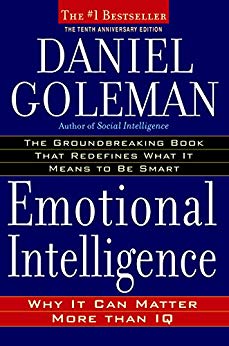

This article is an excerpt from the Shortform summary of "Emotional Intelligence" by Daniel Goleman. Shortform has the world's best summaries of books you should be reading.
Like this article? Sign up for a free trial here .
How does trauma and post-traumatic stress disorder change the brain? How does it affect the amygdala and the opioid system?
Emotions are strong impulses that urge us to take immediate action. The root of the word emotion is motere, the Latin verb meaning “to move.” Watch children or animals: they act almost immediately upon getting a feeling, before they know what they’re doing.
It’s a widely-held belief that emotions aren’t rational. But passionate emotional responses are designed to overwhelm reason. The more intense the emotion, the more it takes over.
Emotions, of course, have normal functional uses. But PTSD occurs when the brain has lowered its setpoint for alarm due to traumatic experiences, making emergencies out of anything remotely resembling either a single, impactful traumatic event or prolonged periods of suffering cruelties.
PTSD also generally stems from traumatic events in which the victim felt helpless. The helplessness is part of what makes the initial traumatic event so overwhelming to the limbic system–it increases the strength of the emotion because the brain feels like there’s no action to take.
Here’s how PTSD affects the brain:
- Key changes in a brain affected by PTSD happen in a structure that regulates adrenaline and noradrenaline, which are emergency hormones. This system turns hyperactive in PTSD, releasing extremely large doses of those hormones in situations that pose little to no threat to the person but resemble the traumatic event.
- But not only does the brain go into hyperactive threat mode as a result of PTSD, the opioid system in the brain also becomes hyperactive. In a healthy brain, the opioid system secretes endorphins to dull any feelings of pain. When this system goes into overdrive, not only does it dull feelings of pain, but also of pleasure, and emotion in general. This creates the numbness and emotional distance that many PTSD victims feel.
- These two changes together seem to increase the likelihood that a person will be further traumatized, since the changes increase the number of emergency alerts while decreasing any positive feeling or connection to the outside world that might offset the emergency.
———End of Preview———

Like what you just read? Read the rest of the world's best summary of Daniel Coleman's "Emotional Intelligence: Why It Can Matter More than IQ" at Shortform . Learn the book's critical concepts in 20 minutes or less .
Here's what you'll find in our full Emotional Intelligence summary :
- What are emotions? Why do we have them?
- What is emotional intelligence? Why is it important?
- How do you manage your own emotions? Anger, anxiety, and sadness?
- How can you approach your relationships with more emotional intelligence?
- How can you teach your children emotional intelligence?
- How can emotional intelligence boost your career?






